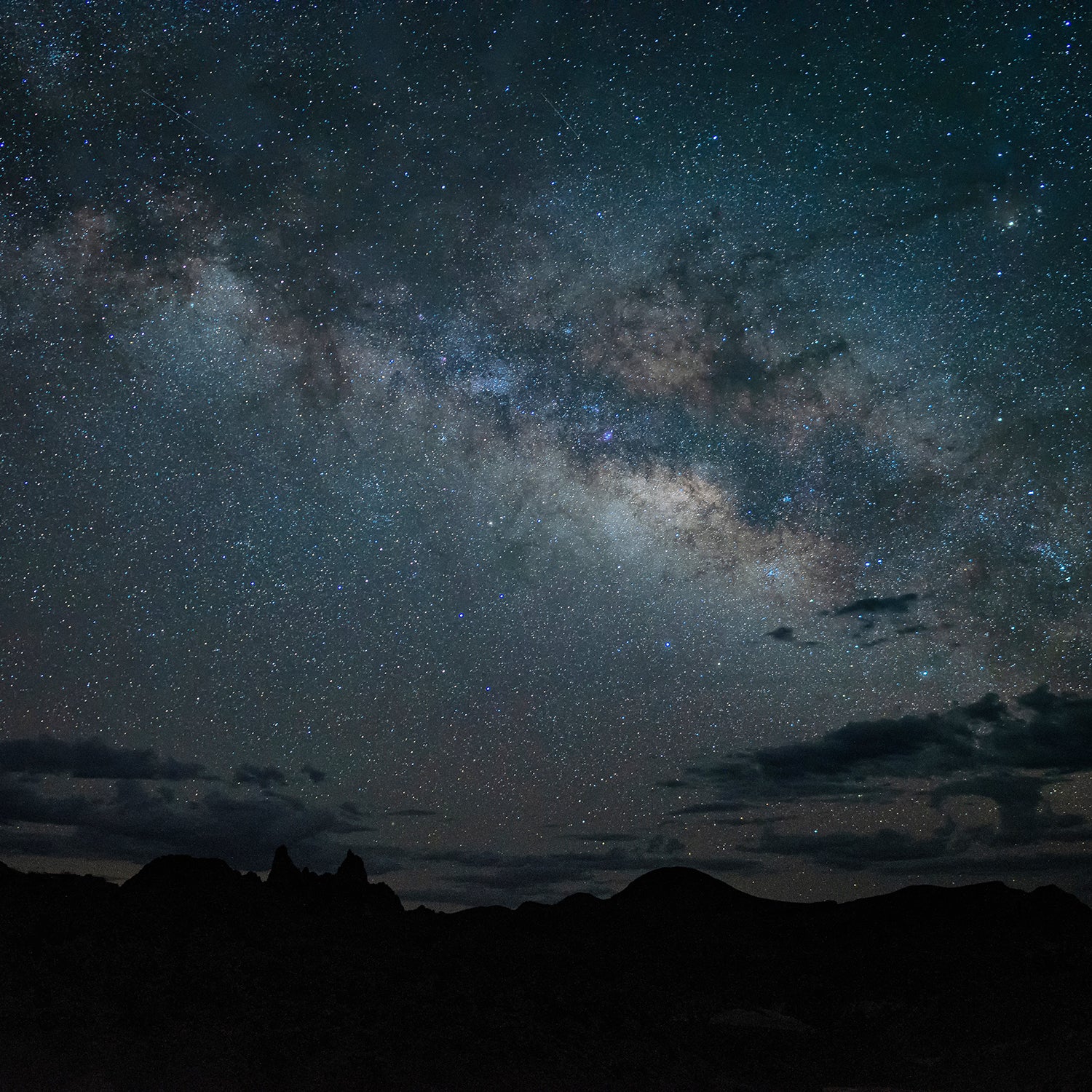Just like clean air and water, dark night skies are a diminishing resource. The culprits: unshielded, excessive, or poorly aimed outdoor artificial lights. The good news is that the (IDA), a nonprofit organization, has stepped in to boost conservation efforts.
In 2007, the IDA began designating International Dark Sky Parks, or exceptionally dark sites surrounded by communities dedicated to preserving them. This makes for epic stargazing. According to the IDA, while you may see around 500 stars in your moderately light-polluted backyard, Dark Sky Parks often boast more than 5,000.
There are 11 Dark Sky Parks in the United States; seven have been designated as “gold tier” parks, the highest possible rating, based on a comprehensive technical scale that considers things like artificial light, skyglow, and observable sky phenomena. Best of all, each place stands alone, offering unique opportunities for both daytime exploring and nighttime awe. So pack up your car and head to one of these starry-skied destinations.
Natural Bridges National Monument, Utah
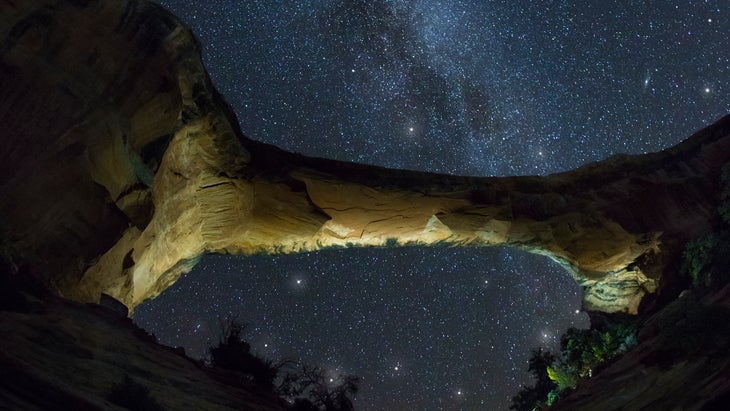
was the first in the world to receive Dark Sky Park status in 2007. Featuring three steam-carved bridges and Anasazi ruins, it also boasts zero light pollution and so many stars that it took one amateur astronomer more than two minutes to find the Big Dipper when he first arrived on site.
For an ideal viewing spot, head to the Owachomo Bridge trailhead—it’s the easiest path to navigate in the dark—and sit on the mesa to watch the Milky Way rise over the bridge. Or catch the Perseids meteor shower in mid-August.
Stay: Pitch a tent in one of the monument’s first-come, first-served campsites, or head to Blanding, about 35 miles away, the nearest town with a smattering of hotels and restaurants.
Cherry Springs State Park, Pennsylvania
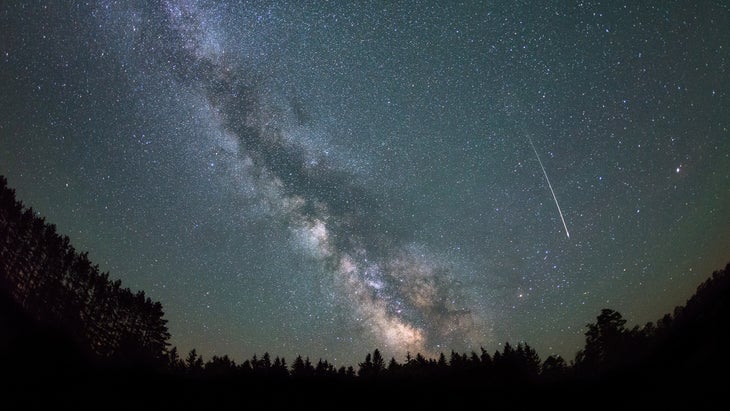
Imagine a landscape of rolling hills in north-central Pennsylvania surrounded by the Susquehannock State Forest, offering 360-degree views of the night sky. This is .
If you just want to set up a blanket and ogle the stars for a couple hours, park in the public night-sky viewing area and follow the footpath to the observation field. Interested in an all-nighter? The Astronomy Field, for serious stargazers, is an area to set up telescopes and camping gear. For a party with hundreds of like-minded friends, register for the in late June, a multiday star festival.
Stay: If you’re not into sleeping under the stars in one of the park’s primitive sites, head to nearby Coudersport, about 15 miles away, for modern hotels and B&Bs.
Clayton Lake State Park, New Mexico
Situated on the rolling prairie, offers the unique opportunity of gazing at the stars on a “dinosaur freeway.” Trails lead to more than 500 dinosaur footprints dating back to the Cretaceous period. Everywhere on the west side of the park has low light pollution, ideal for stargazing. For a closer look at the night sky, check out the Star Point Observatory, which features a roll-off roof and a 12-inch computerized telescope.
Stay: Camp in the park (there are even hot showers), or head to nearby Clayton, 12 miles south, which offers everything from mom-and-pop hotels to the historic .
Big Bend National Park, Texas
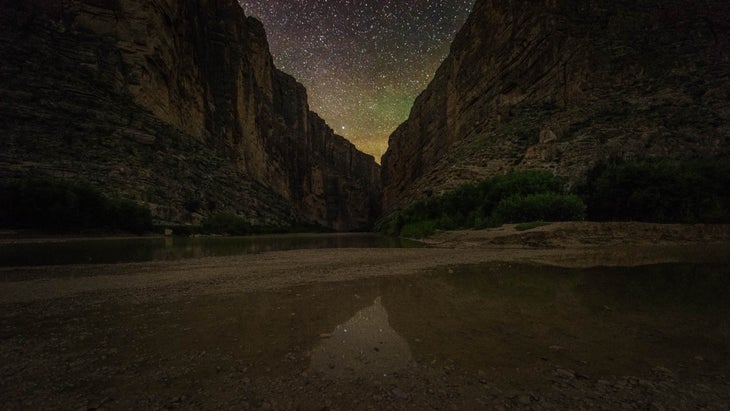
Bumping up against the Mexican border in southwest Texas, puts you that much closer to the Southern Hemisphere. In excellent viewing conditions, you’re likely to see two or three stars in the Southern Cross.
Visitors often make it a joint affair: Before heading toward the park’s expansive night sky and unique desert and mountain terrain, visit McDonald Observatory a couple of hours north. There you’ll find one of the world’s largest optical telescopes, which has revealed distant galaxies and black holes.
Stay: The , in the heart of the park, offers hotel rooms, cottages, and a restaurant.
Death Valley National Park, California
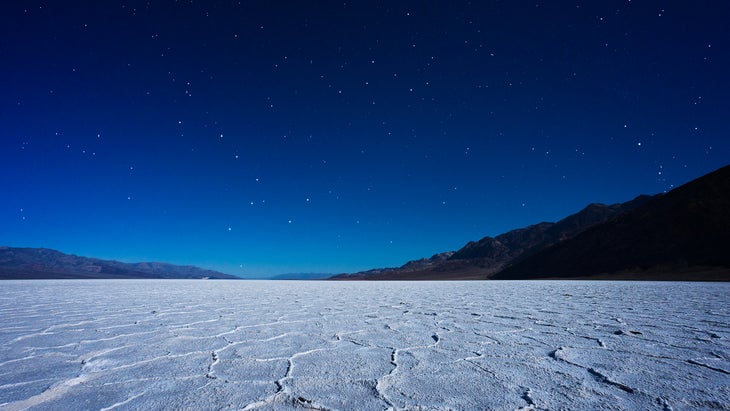
—the largest IDA park in the United States—has drawn an increasing number of stargazers in recent months thanks to its low, dry, and dark location. Although the best conditions are in winter, when there’s no haze seeping in from Los Angeles, the stargazing is fantastic year-round. Ideal spots include the Racetrack or the Ubehebe Crater. For a truly dazzling experience, head to the remote Saline Valley Warm Springs, about five hours from the main part of the park (check road conditions), where you can turn your eyes skyward while soaking.
Stay: No need to leave the park for food or lodging—several campgrounds and lodges offer a wide range of options.
Chaco Culture National Historical Park, New Mexico
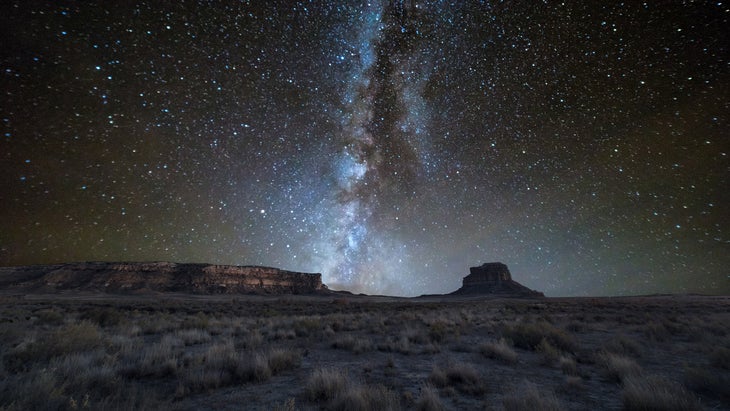
At the end of a dirt road, 90 minutes from the town of Cuba in northwestern New Mexico, sits the remote . Visitors stargaze among ruins from the ancestral Pueblo people. Don’t miss the presentation about archeoastronomy—a discipline that marries archeology and astronomy and sheds light on how ancient astronomers viewed the patterns of the sun and moon. Since there are no trees for respite from the summer heat, plan to make the trip in spring or fall.
Stay: Visitors aren’t allowed to enter the heart of the park after dark, so it’s a good idea to stay in the campground, which has sites for reserve or first-come, first-served.
Parashant National Monument, Arizona
Perched in northwestern Arizona and grazing the edge of the Grand Canyon, , a recent addition to the IDA list, is managed by the National Park Service and the Bureau of Land Management. (It’s the first Dark Sky designation for BLM land.)
The landscape ranges from low-level Mojave Desert to mountains covered with ponderosa pines. The darkest skies are located from the center of the park to the eastern Mount Trumbull or Mount Logan areas, about 2.5 hours from the St. George interagency office in Utah. It’s a good idea to stop in the office en route for a map and to learn about road conditions. This is desolate country. Pack spare tires, gas, and food.
Stay: Camping is dispersed. The , in the heart of the monument, offers covered wagons and dormitory-style lodge rooms.


